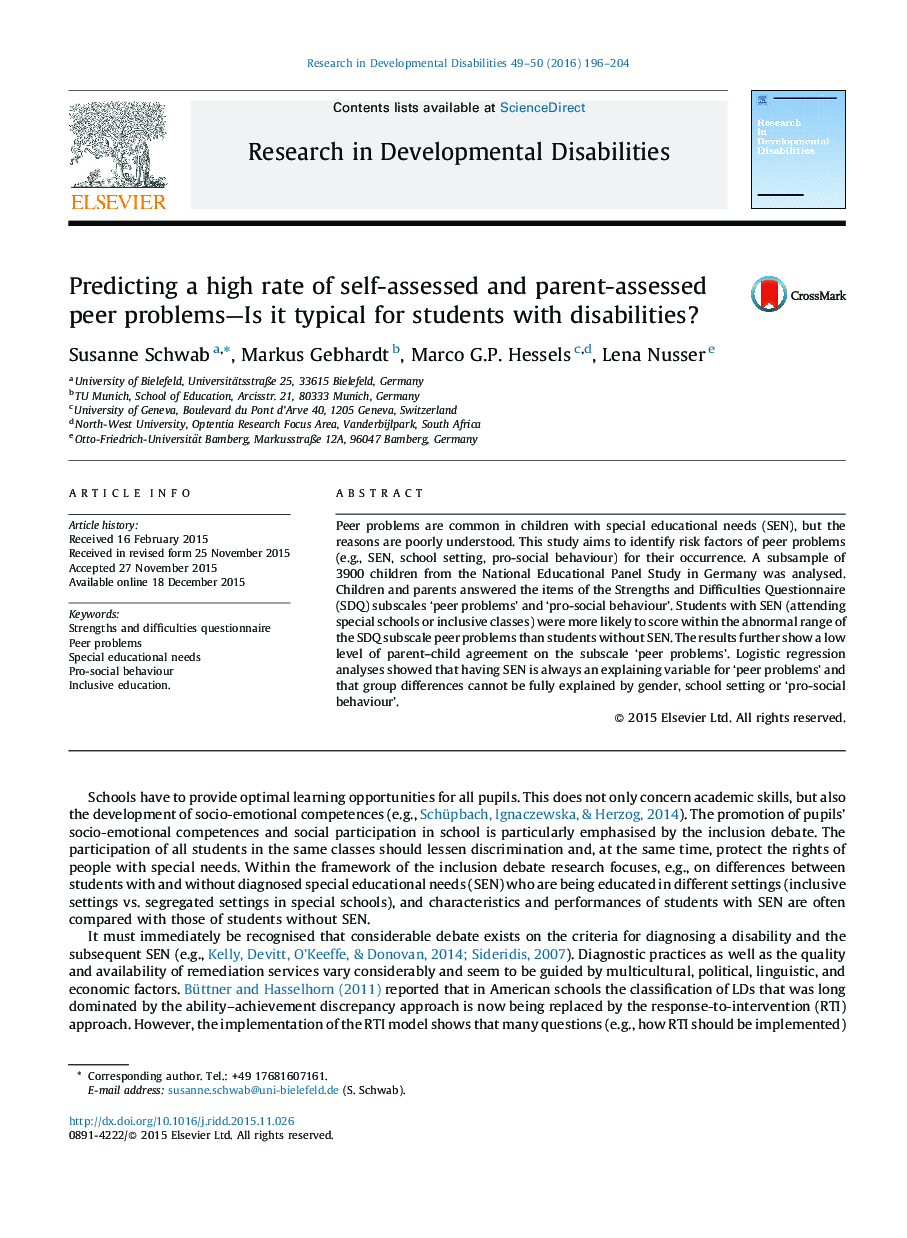| Article ID | Journal | Published Year | Pages | File Type |
|---|---|---|---|---|
| 371055 | Research in Developmental Disabilities | 2016 | 9 Pages |
•Peer problems are common in students with special educational needs (SEN).•SEN students more often have’abnormal’ scores on the SDQ subscale’peer problems’.•Parent–child agreement on the SDQ subscale’peer problems’ is low.•Logistic regression shows that SEN is an important predictor for’peer problems’.•Pro-social behaviour cannot fully explain differences in’peer problems’.
Peer problems are common in children with special educational needs (SEN), but the reasons are poorly understood. This study aims to identify risk factors of peer problems (e.g., SEN, school setting, pro-social behaviour) for their occurrence. A subsample of 3900 children from the National Educational Panel Study in Germany was analysed. Children and parents answered the items of the Strengths and Difficulties Questionnaire (SDQ) subscales ‘peer problems’ and ‘pro-social behaviour’. Students with SEN (attending special schools or inclusive classes) were more likely to score within the abnormal range of the SDQ subscale peer problems than students without SEN. The results further show a low level of parent–child agreement on the subscale ‘peer problems’. Logistic regression analyses showed that having SEN is always an explaining variable for ‘peer problems’ and that group differences cannot be fully explained by gender, school setting or ‘pro-social behaviour’.
